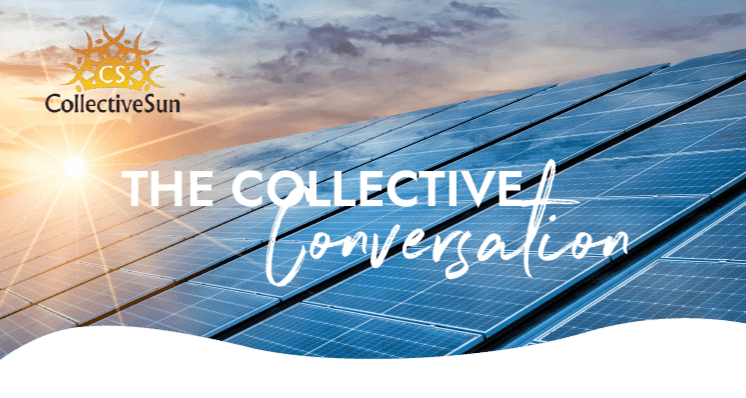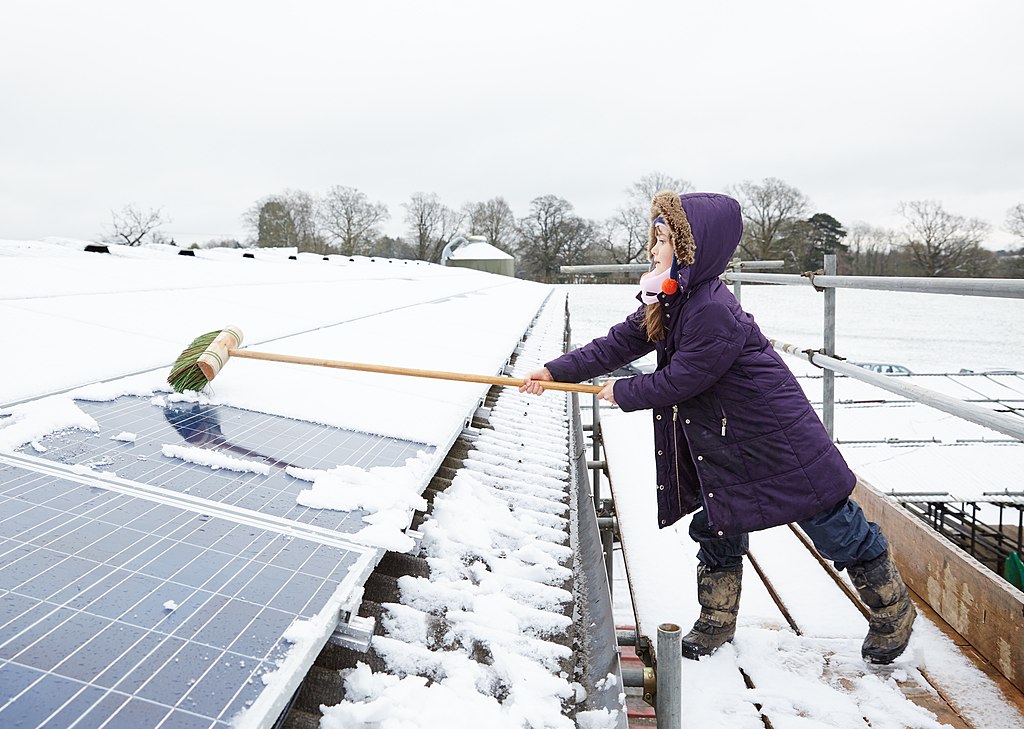
Do Solar Panels Work When it Snows?
|
If your nonprofit is in a location that gets winter snow and you’re wondering whether solar panels will work there, here are some facts that may set your mind at ease: Germany has long been a global leader in solar energy. Minnesota, New York, and Massachusetts are the top states for community solar, which is also expanding rapidly in Maine and Illinois. Midwestern states Ohio and Indiana are set to become leading solar states.
Snow hasn’t been a barrier to installing solar in these snowy places, and it need not be a barrier for your nonprofit.
Unexpected benefits of solar in cold climates
Cold climates can actually be helpful for solar, because colder temperatures increase panel efficiency, improving energy generation. Even if it snows, that’s not usually a significant issue; shading tends to be a much bigger problem for solar panels than snow.
With a light dusting of snow, some sunlight can still get through to the panels, allowing them to continue generating energy. Because solar panels are slick and are installed at an angle, the snow will often simply slide off the panels. This can help clean your solar panels, as dirt and dust on the panels bonds with the snow and is washed away when the snow melts off. Solar panels tend to generate their own heat as they produce energy; this, along with their reflective quality, accelerates melting of the snow. In fact, if there’s a lot of snow near your panels, the reflective nature of the snow itself can also help speed up the melting.

Snow on solar panels generally melts more quickly than on surrounding areas.
After severe winter storms, solar power can fare better than the power grid if it’s paired with energy storage. While the panels may experience some down time, that’s likely to be shorter than an extended grid power outage. The solar panels may still continue generating some power, and the battery can store that energy. With solar plus storage, your nonprofit may be able to stay online longer than other buildings in the area.
All of this doesn’t mean that snow can’t be an intermittent issue for your solar system, especially during heavier snowfalls. Fortunately, there are ways to mitigate snow-related issues.
Optimizing solar performance in snow
To ensure optimal solar energy generation, the first step is for the panels to be installed correctly. In very snowy locations, that means using equipment that’s designed for heavy snow, including a strong mounting system.
Angling the panels helps the snow slide off quickly. Most panels are already angled to maximize solar generation, meaning they are already optimized for snow. For larger solar installations it might make sense to install a heater or heating cables for your panels, or even a self-cleaning system that removes not only snow but also dirt and dust from the panels. These solutions are not a requirement and are likely not cost-effective for most smaller installations, like the ones on the roofs of nonprofits.
If the system is mounted on a roof, the roof should have proper ventilation to keep warm air from escaping from the building and causing ice dams on the roof. An ice and water shield can be installed on the roof to prevent melting snow from seeping in.
A monitoring system for your solar installation can help you keep track of how your system is functioning in snow. Just watch for “false positives,” warns Gareth Walker, Data Science Manager at our partner Omnidian, a solar and storage performance assurance provider. A monitoring system may indicate there’s an issue, when in fact your solar is simply not producing as much as usual because of snow cover. Omnidian has developed algorithms in its monitoring software to account for snow on solar panels, but without a tool like theirs, you might think your system is malfunctioning when it isn’t.
Other than these potential false positives, snow is not a big factor for most solar systems. “We do a lot of predicting and reporting of snow losses to give our clients the visibility they need on what role snow has in their system’s annual production,” says Gareth. “What we find is that snow isn’t usually an issue. Unless you have a very large-scale installation in extremely snowy conditions, snow is not going to affect your net energy production to a significant extent.”
A simple solution with a big impact
Solar panels have been around for a while, and people have been dealing with snow on them for a while.
The Rocky Mountain Institute (RMI) Innovation Center, a “state-of-the-art beyond net-zero energy office” in Colorado, provides a prime example. As part of the team that developed the solar project at the Innovation Center in 2015, CollectiveSun provided financing for the solar on the Innovation Center’s roof. At the time, built-in heaters were considered for the 248 panels, but it was determined that they would not be cost-effective for the 83 kilowatt (kW) system; they would have also added to the building’s energy demand, not ideal for a net-zero building. The system’s estimated first-year production of 113,588 kWh, which accounted for snow accumulation during winter months, was still expected to exceed the Center’s energy needs.
How did it work out? Evan Young, Maintenance Technician at RMI, says that the system is living up to expectations, producing even more energy than had been estimated.
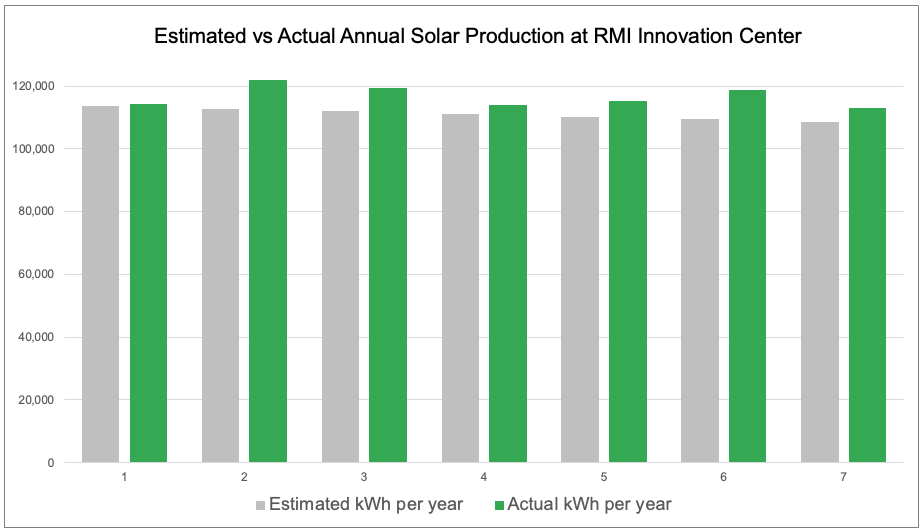
RMI Innovation Center solar production and consumption, 2016–2022.
That’s without dealing with snow. But when it snows, Evan has found a simple solution: he goes up to the roof and brushes off what he can with a 14-foot RoofBrum snow brush. While his brush can only reach about a third to half of the panels, this simple task can increase the system’s daily production by about 300%. That’s 300% over the expected production for a winter day, which is naturally much lower than summer production.
“You’re probably going to get an extra 8,000 kilowatts of generation from just doing this over the winter,” he says, but it’s not necessary when there’s just a dusting of snow. “If it’s less than two inches, I won’t touch it, especially if I know it’s going to be a sunny day. You also have to take humidity and temperature into account, because even two inches can turn into ice.”
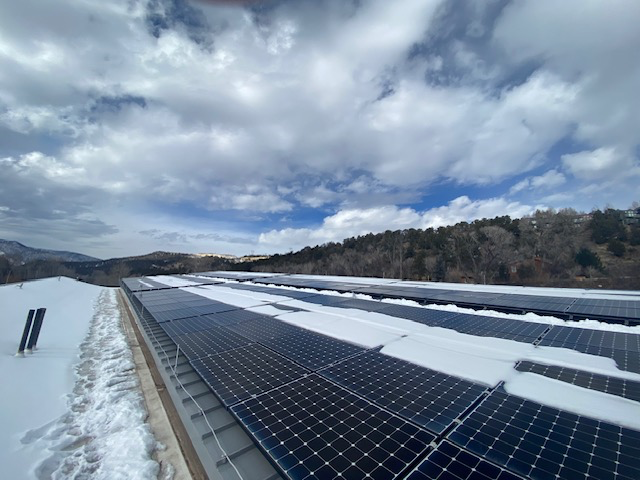
The RMI Innovation Center roof after one of Evan’s panel cleanings. Source: RMI.
Although Evan feels that his one-hour effort to brush off the panels now and then is worth it, it’s not strictly necessary. Whether snow is cleared from the panels or not, the building’s annual energy production remains high. And because the panels must be brushed carefully to avoid damaging them, it only makes sense to do this if great care is taken.
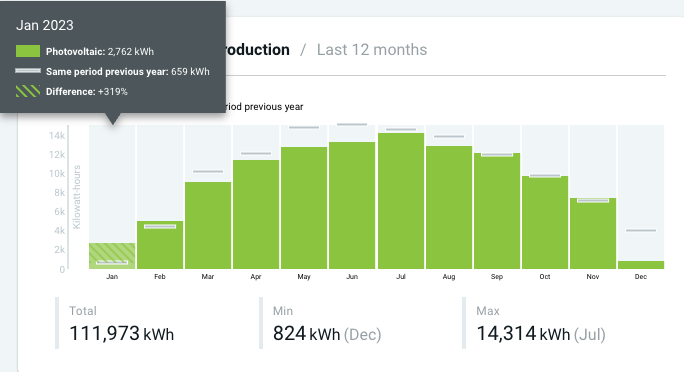
Solar production this January was much higher than last year because of Evan’s new practice of brushing the snow off the panels. It was still much lower than in July, of course, which would be the case even without any snow. Source: RMI.
Let it snow
The RMI Innovation Center serves as a perfect model for how to deal with snow on solar panels, because it’s in snowy Colorado and, at 15,610 sq ft, it’s similar in size to about 90% of commercial office spaces in the U.S. As the RMI example shows, snow is not a significant issue for most solar projects. Unless you’re dealing with a very unique case, such as an installation deep in Alaska, chances are that snow will not be an issue for your solar.
If you have questions about solar in snowy locations, or any other questions about solar for nonprofits, don’t hesitate to reach out to CollectiveSun.




